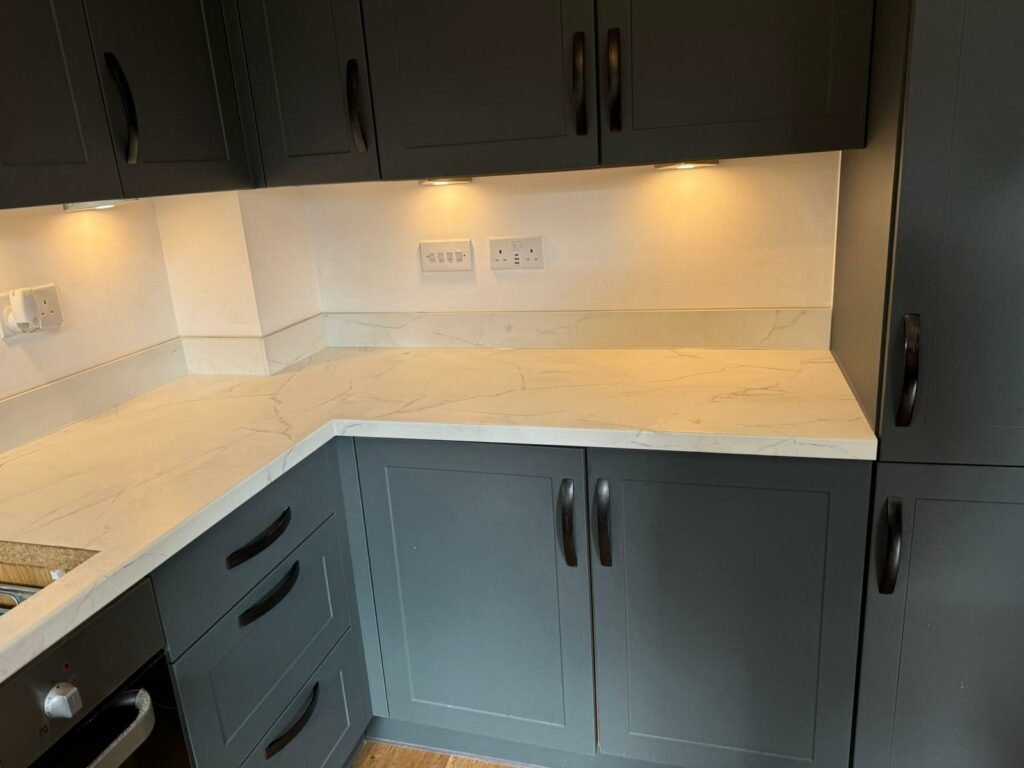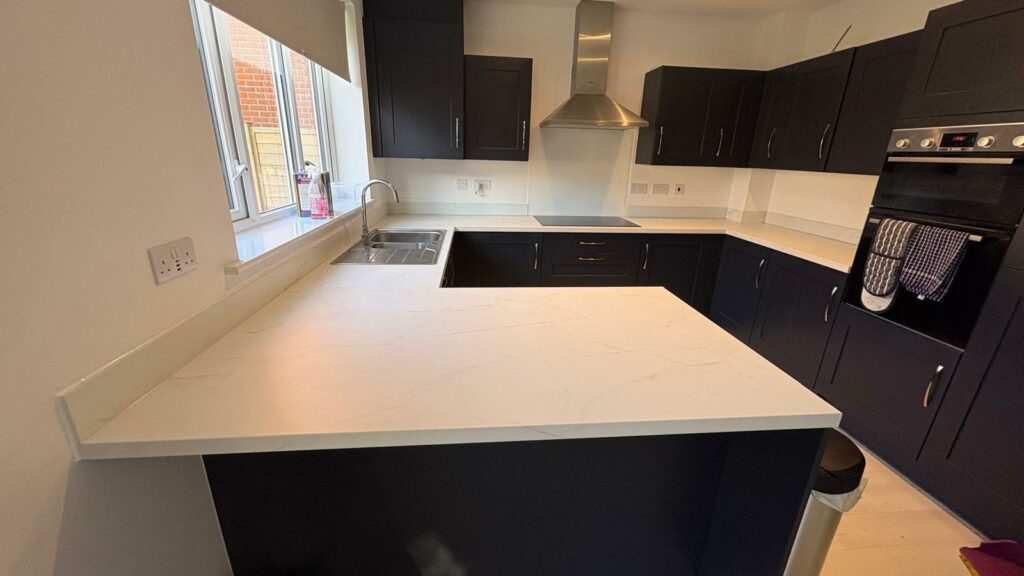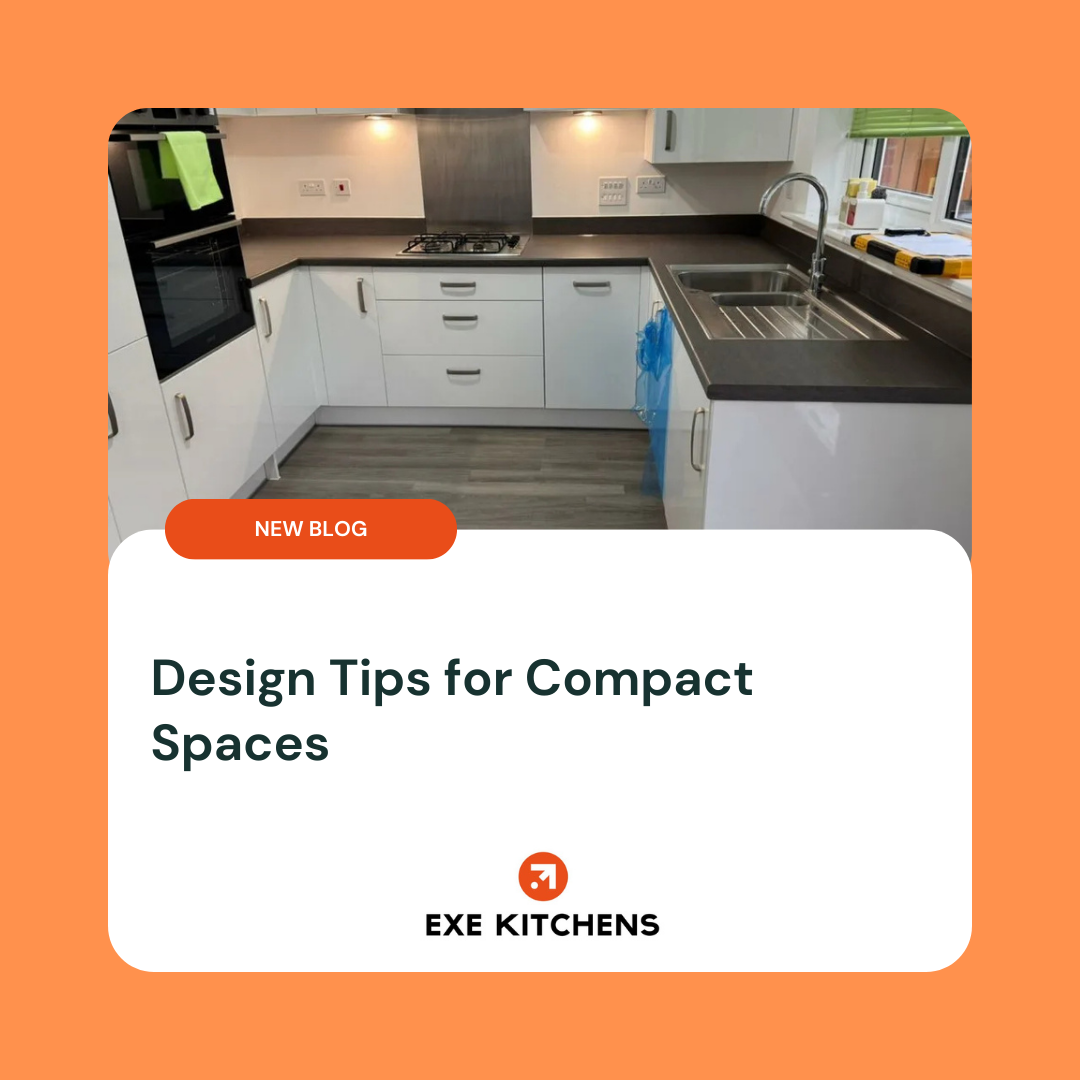Kitchen lighting is essential for creating a functional and inviting space. It not only enhances the practicality of your kitchen but also adds to its aesthetics, making it a hub for cooking, dining, and socialising. In this comprehensive guide, we’ll explore everything you need to know about kitchen lighting, from design basics to the latest trends.

Understanding Kitchen Lighting Basics
The Three Main Types of Lighting
To achieve a well-lit kitchen, it’s important to layer different types of lighting:
- Ambient Lighting: Provides overall illumination to make the space bright and welcoming.
- Task Lighting: Focused lighting for specific areas, such as countertops and cooking zones.
- Accent Lighting: Adds style and highlights features like cabinets or artwork.

Why Kitchen Lighting Matters
- Improves visibility and safety while cooking.
- Enhances the ambiance for dining and entertaining.
- Adds value to your home by improving its aesthetic appeal.
Choosing the Right Lighting for Your Kitchen Zones

Lighting for Worktops and Cooking Areas
Task lighting, such as under-cabinet LEDs or recessed lights, ensures these areas are brightly lit for precision and safety.
Dining and Socialising Spaces
Ambient lighting, paired with pendants or wall-mounted fixtures, creates a relaxed atmosphere for dining or entertaining.
Cupboards and Pantry Lighting
LED strips or motion-sensor lights inside cabinets and pantries make it easy to find what you need.
Kitchen Islands and Breakfast Bars
Pendants over islands provide both functional and decorative lighting. Combine with dimmable ambient lighting for versatility.
Types of Light Fixtures for Kitchens
LED Spotlights and Downlights
These fixtures are versatile, energy-efficient, and ideal for modern kitchens. They provide focused light and blend seamlessly with the ceiling.
Under-Cabinet Lighting
Perfect for illuminating work surfaces without casting shadows, under-cabinet lights are a must-have for functionality.
Pendant Lights
Available in various styles, pendant lights add a design element to islands and dining areas.
Wall-Mounted Fixtures
These fixtures save space and can add an artistic touch to your kitchen walls.
Chandeliers and Statement Pieces
Chandeliers can act as a focal point, especially in larger kitchens, bringing an element of luxury.





Selecting the Best Light Bulbs
Understanding Lumens and Wattage
- Lumens: Measure brightness. Higher lumens suit task areas, while lower lumens are ideal for ambient zones.
- Wattage: Choose energy-efficient bulbs that provide adequate brightness without high energy consumption.
Warm White vs Cool White
- Warm White: Creates a cosy, inviting feel, ideal for dining areas.
- Cool White: Enhances visibility and focus, making it suitable for cooking zones.
Energy-Efficient Bulbs
Switch to LEDs for long-lasting, eco-friendly lighting. They consume less energy and produce less heat compared to traditional bulbs.
Lighting Design for Small Kitchens
Maximising Brightness
- Use reflective surfaces, such as glossy tiles or countertops, to bounce light.
- Install recessed or track lighting to avoid cluttering the space.
Creative Lighting Solutions
- Mirrors can amplify natural and artificial light.
- Slim under-cabinet fixtures or adhesive LED strips save space and brighten up dark corners.
Creating Ambiance with Dimmer Switches
Why Use Dimmer Switches?
Dimmer switches let you adjust light levels, making the kitchen versatile for cooking, dining, or relaxing.
Ideal Zones for Dimmers
- Dining tables
- Kitchen islands
- General ambient lighting
Trends in Kitchen Lighting
Minimalist Designs
Simple fixtures with clean lines and neutral colours are popular for modern kitchens.
Industrial-Style Lighting
Exposed bulbs and metal finishes give a trendy, urban look.
Smart Lighting
Smart systems allow you to control brightness and colour through apps or voice commands, making your kitchen adaptable to any situation.



Tips for Installing Kitchen Lighting
Work with Professionals
Hiring a certified electrician ensures safety and compliance with electrical standards.
DIY-Friendly Options
Opt for plug-in fixtures or adhesive strip lights for an easy, affordable update.
Plan Lighting Layout Early
Incorporate lighting into your kitchen design plan to ensure proper placement and wiring.
Common Lighting Mistakes to Avoid
Insufficient Task Lighting
Neglecting task lighting can lead to shadows and unsafe conditions in critical areas like the hob or sink.
Over-Lighting or Under-Lighting
Too much light can feel harsh, while too little can make the space unusable. Balance is key.
Skipping Energy Efficiency
Avoid outdated incandescent bulbs. Energy-efficient options like LEDs save money in the long run.
Maintaining and Updating Kitchen Lighting
Regular Cleaning
Dust and grease can dim your fixtures. Clean light fittings with a damp cloth and gentle cleaner regularly.
Replace or Upgrade Bulbs
Switch to energy-saving options or upgrade to smart lighting for better performance.
Seasonal Updates
Change lightbulbs to warmer or cooler tones to refresh your kitchen’s look throughout the year.
Conclusion
Kitchen lighting is more than just a functional necessity—it’s a vital aspect of your home’s design. By layering ambient, task, and accent lighting, and choosing the right fixtures and bulbs, you can create a versatile, stylish kitchen that suits your needs. Whether you’re cooking a meal, hosting a dinner, or enjoying a quiet coffee, the right lighting will set the perfect mood.
FAQs
Q1: What is the best lighting for small kitchens?
Under-cabinet lighting and recessed spotlights work well in small kitchens, providing brightness without taking up space.
Q2: Can dimmer switches improve kitchen lighting?
Yes, dimmer switches let you customise the brightness, making your kitchen more versatile for different activities.
Q3: How can I make my kitchen lighting energy-efficient?
Switch to LED bulbs and consider smart lighting systems for better energy savings and convenience.
Q4: Are pendant lights a good choice for kitchens?
Yes, pendant lights are both functional and decorative, ideal for islands or dining areas.
Q5: How often should I update my kitchen lighting?
Update fixtures every 10-15 years or as needed, and replace bulbs with energy-efficient alternatives for optimal performance.


